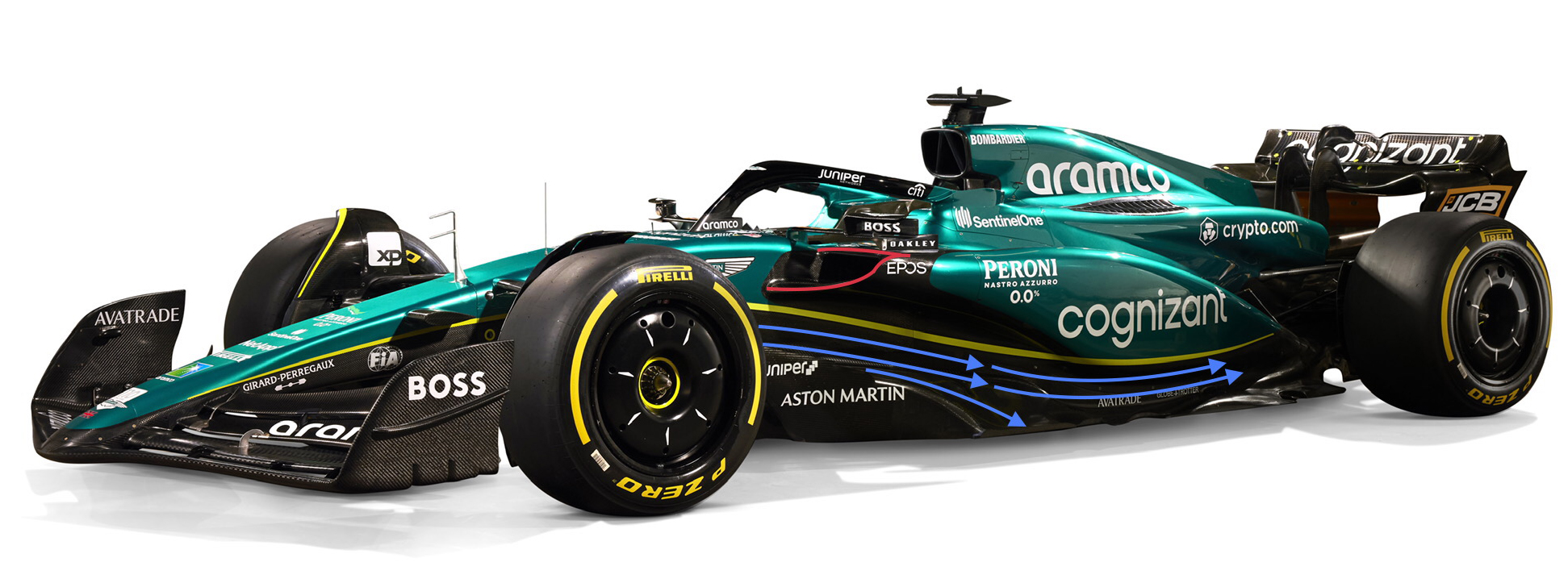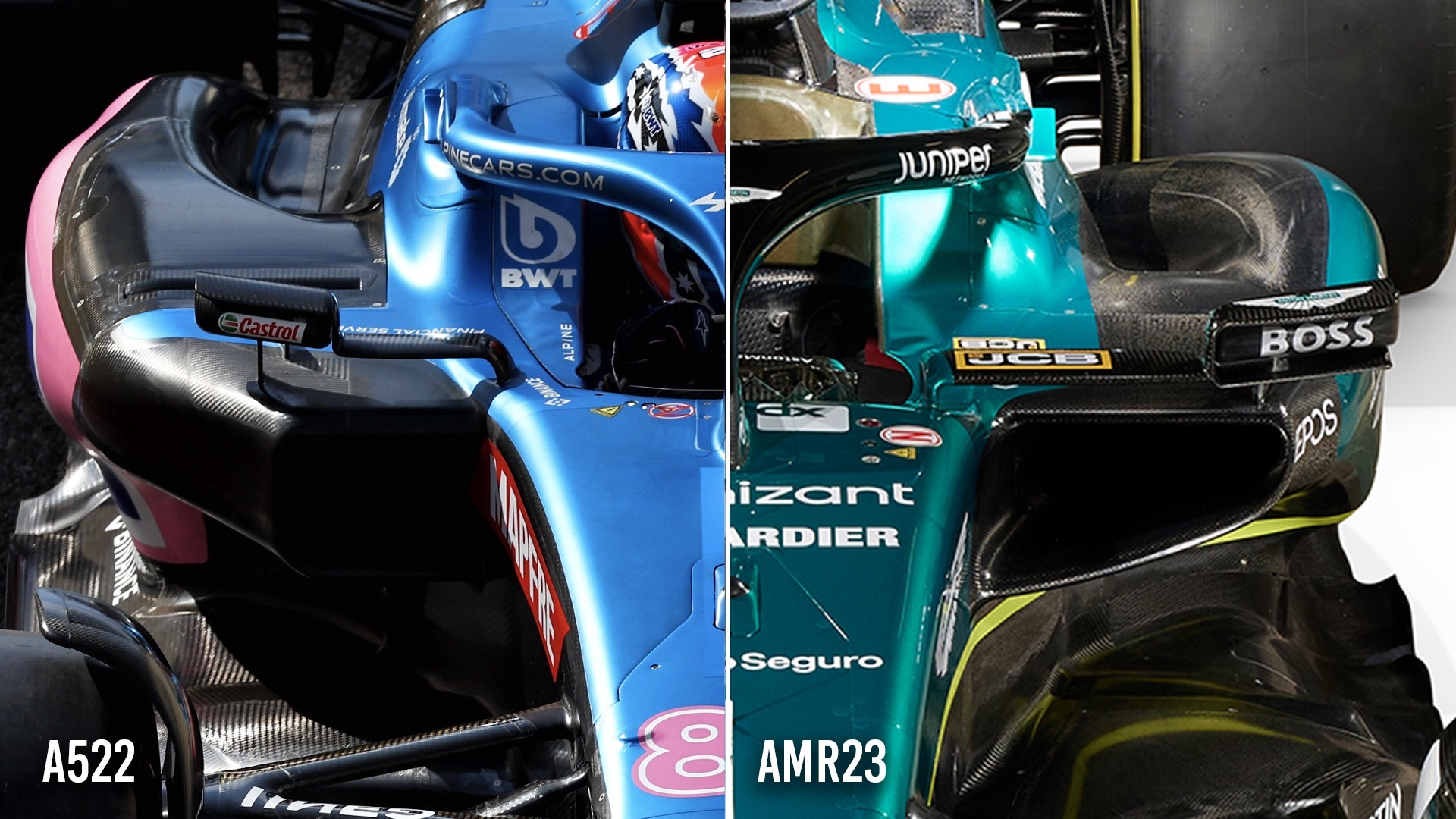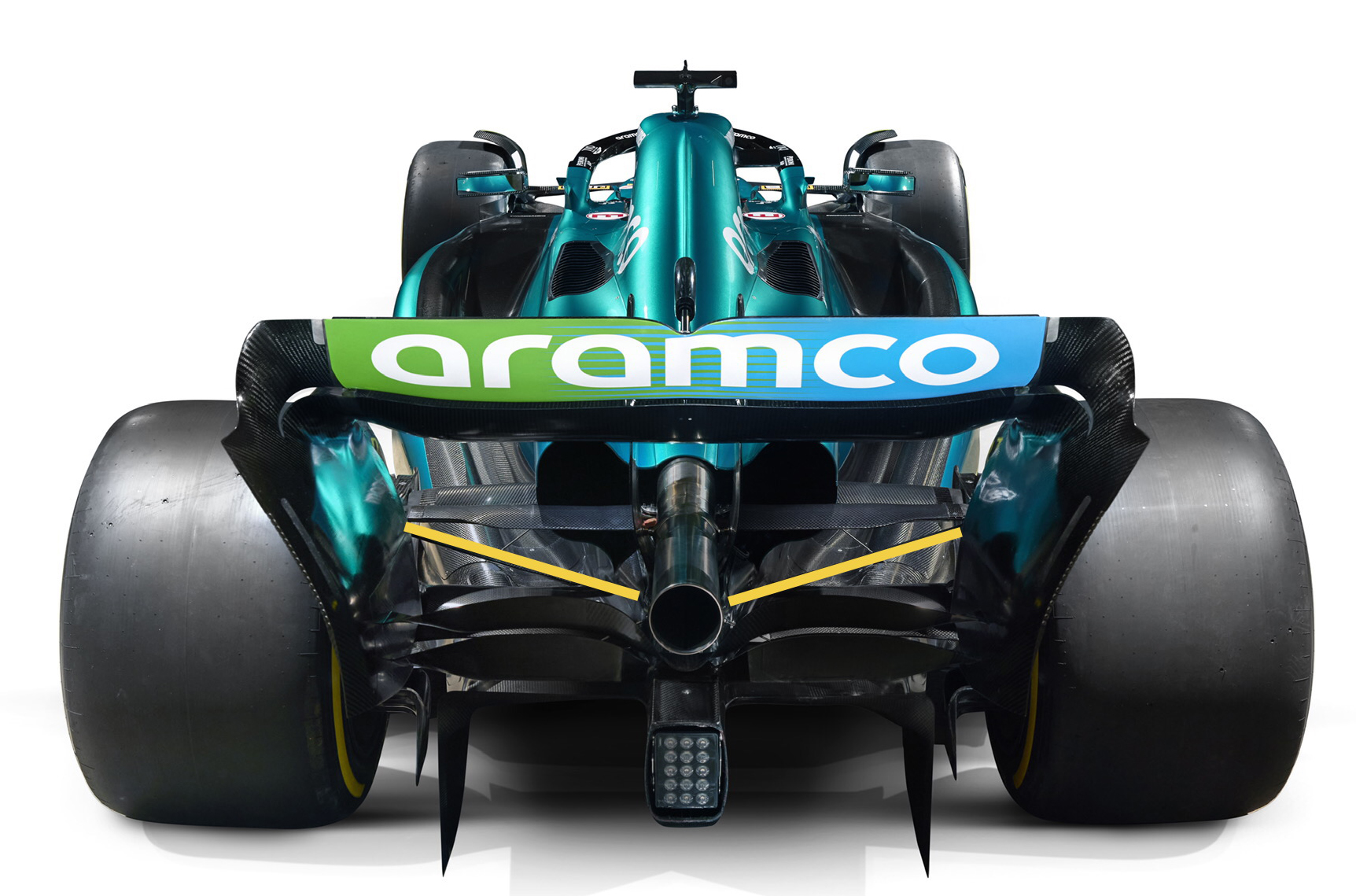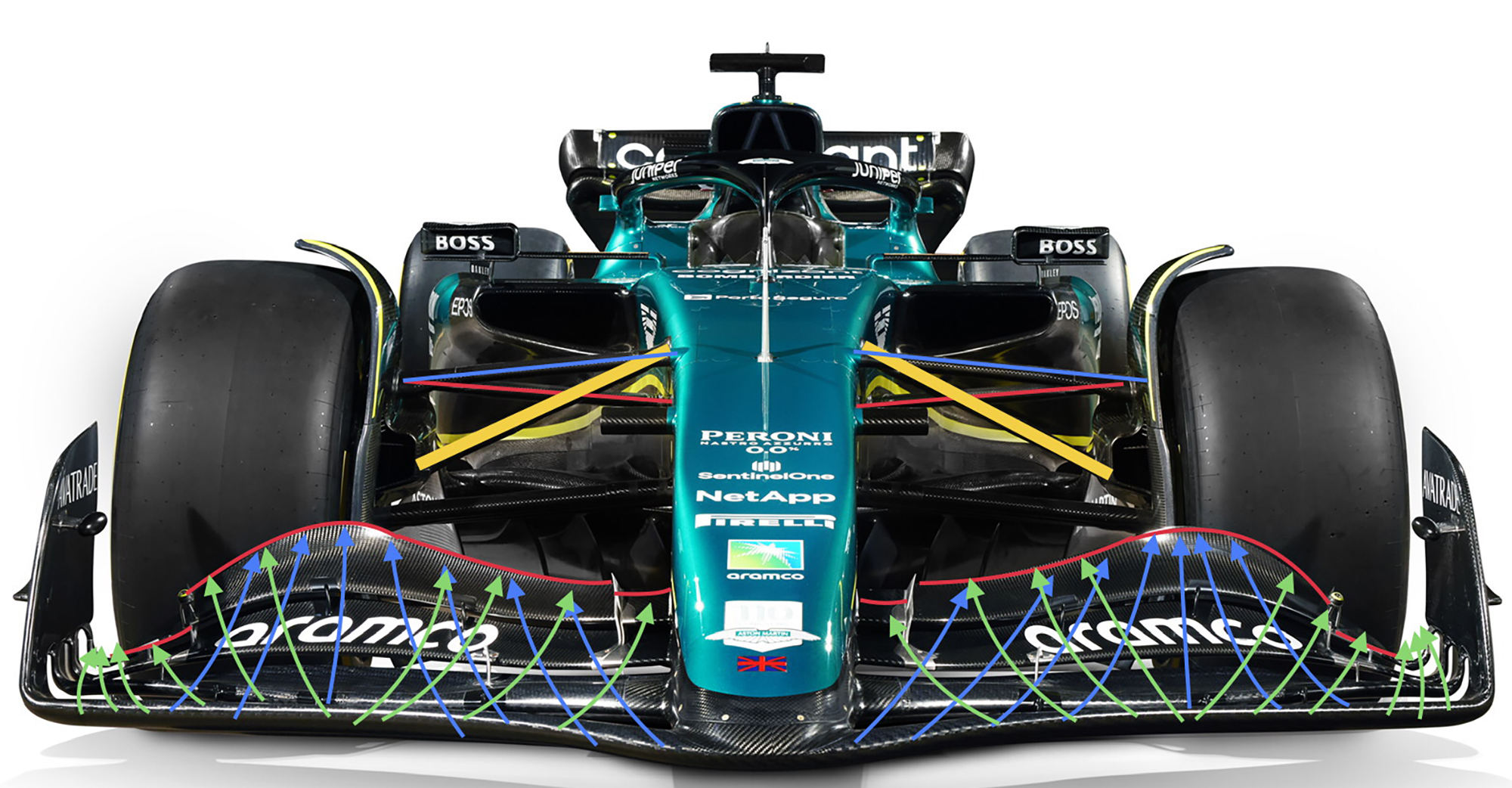Most of the 2023 Formula 1 cars we’ve seen so far have had sidepods that are a cross between Ferrari and Red Bull’s designs from last year.
But you could easily say that the Aston Martin AMR23 is more of a Red Bull than the others.

Obviously under the skin they are all a bit different but we can only comment on what we see and last year the big visual differences was in the sidepods: the bulbous Ferrari solution, the detailed Red Bull and the zero sidepod Mercedes.
Strangely (or perhaps not) we haven’t seen many of the latter so far this year.

On the Aston Martin you can see the bulge for the lower side impact structure (SIP) (highlighted with the yellow ellipse), the undercut flow lines and the laid-back radiator inlet are all Red Bull-style.

One of the interesting features on the Aston Martin sidepod upper surface is the deep gulley.
Alpine had something similar last year – see comparison below – and we have all seen what we have called the Ferrari ‘bathtub’ sidepod top.

All are designed to do the same thing: contain the airflow spillage that is generated when the radiators within the sidepods just can’t flow the amount of air that is presented to them. Controlling this flow – which only happens at high speed – is important to the overall efficiency of the coke bottle area of the sidepod flow structure.
There’s not really a lot to see on the floor sides yet. This is the area where the regulations changed so I expect it is the area of most development and therefore most teams will be hiding that detail until the last moment.
We will only see the different solutions when pre-season testing starts and I am sure even that will be different to when the teams rock up for the first race weekend.

On the rear the car has a pullrod system (yellow highlight, above). It’s difficult to see the wishbone layout but it doesn’t look like a simple top and bottom wishbone, it looks more like a multi-link system. We will see in more detail what turns up for pre-season testing.
The front suspension set-up is a pushrod system (yellow highlight, below). Again Aston Martin has a fair amount of anti-lift characteristics on the front suspension, the top wishbone rear leg inboard end (red line) being a lot lower than the forward leg inboard end (blue line).
The front wing flap detail is quite different. It’s highly loaded just inside the front tyres (red line), with reduced loading where it joins the nose and at the outer end.

I can understand the change at the outer end as this should allow more top surface flow to escape around the outside of the tyre (green arrows), creating outwash.
But as for the increase in loading going outboard it will create transverse flow on the underside (blue arrows) which can cause problems further downstream and while that is happening the upper surface (green arrows) will create transverse flow outwards. It’s a fairly confusing flow regime coming off the trailing edge of the flaps and when we talk about flow structure around the whole car it could prove difficult to manage consistently.

